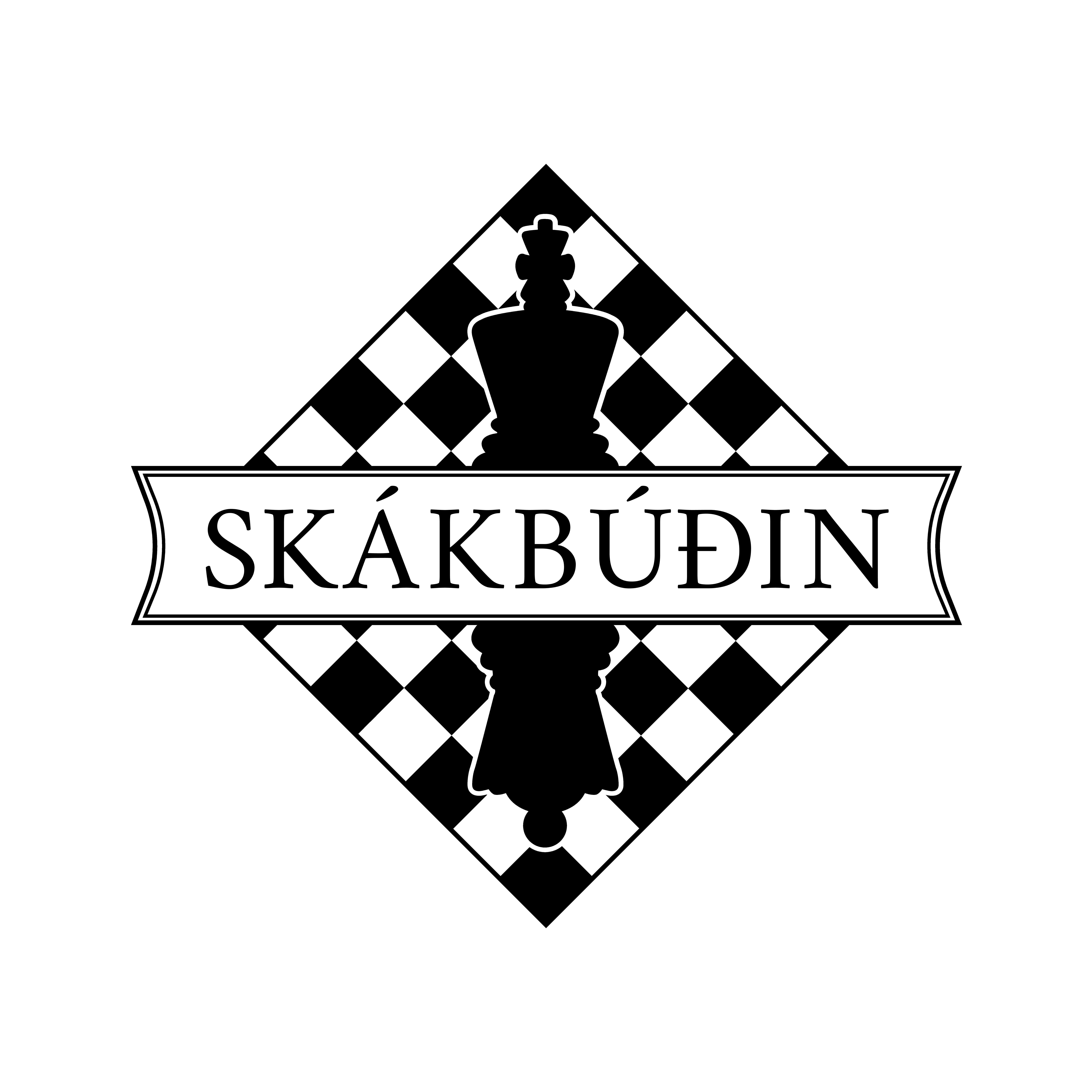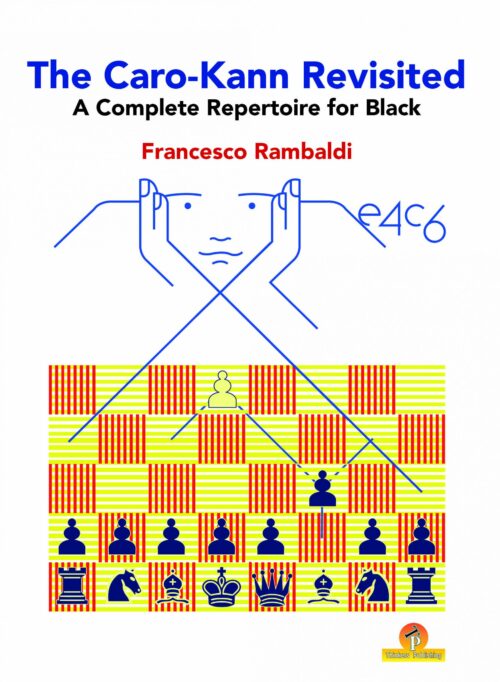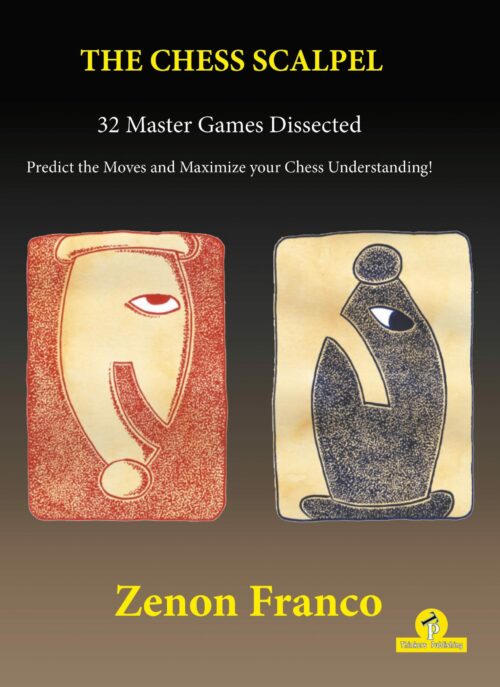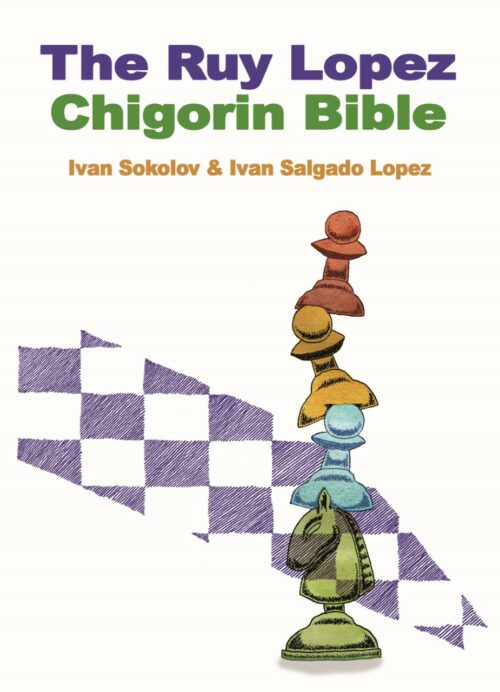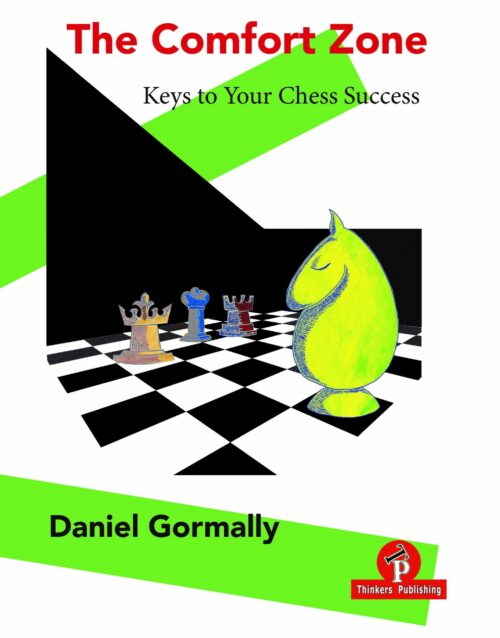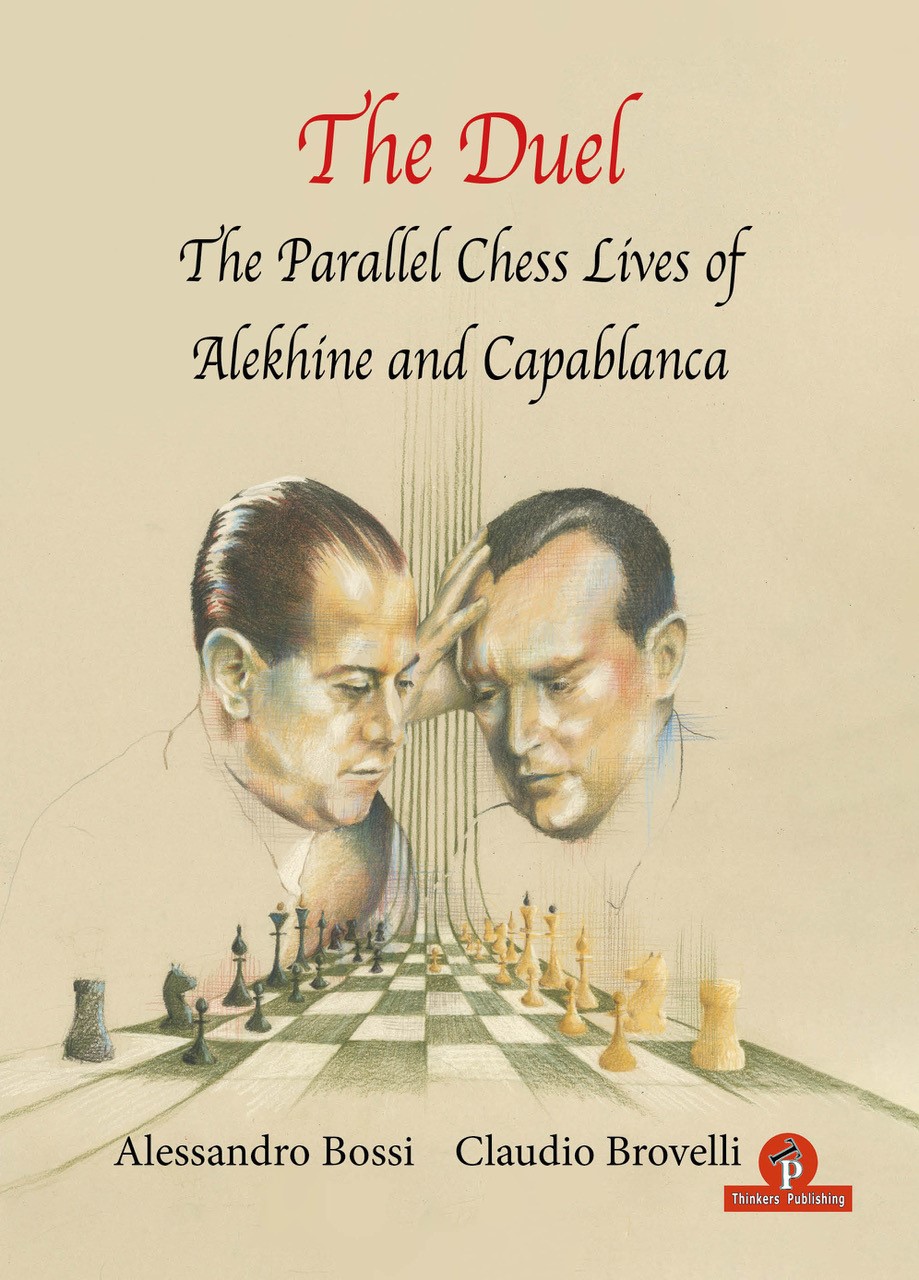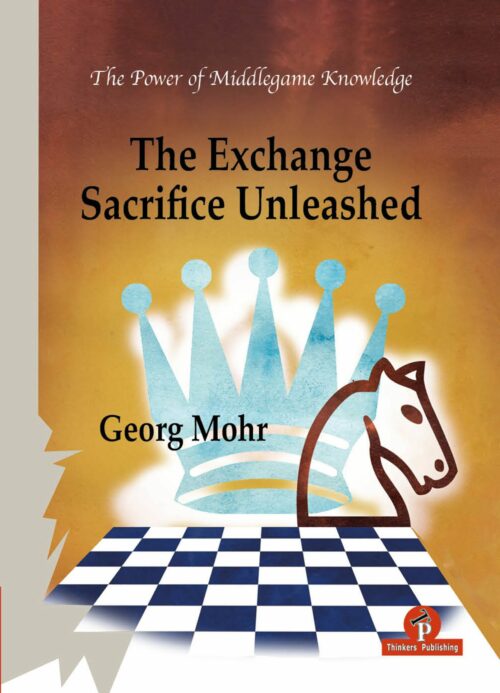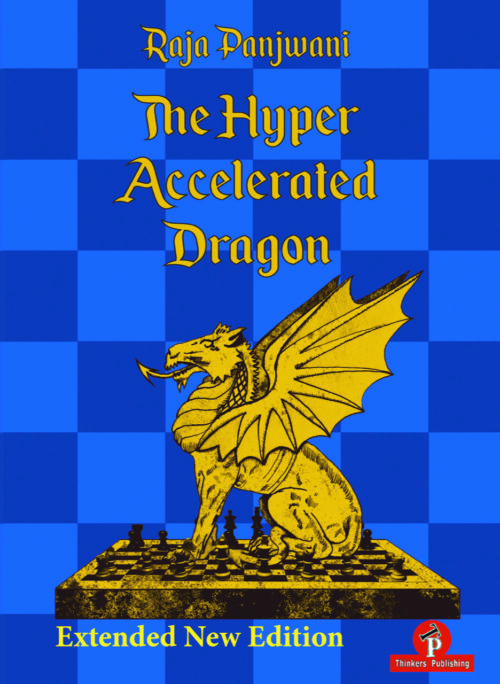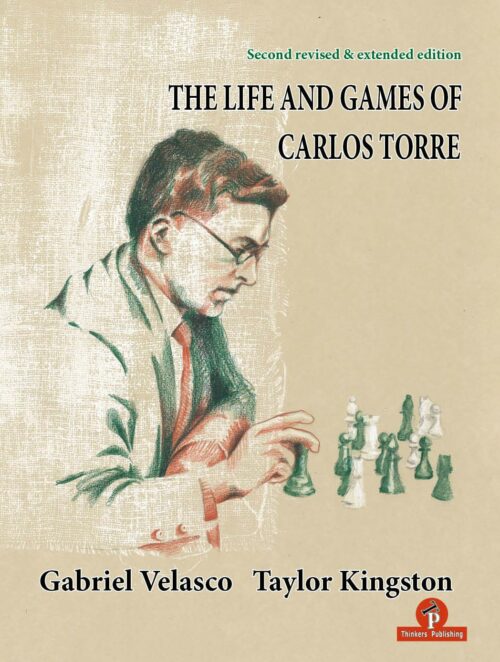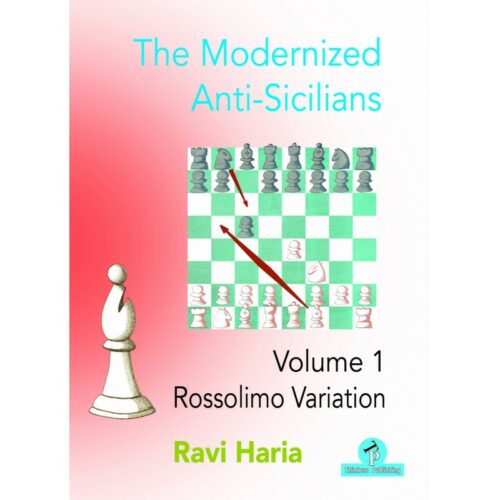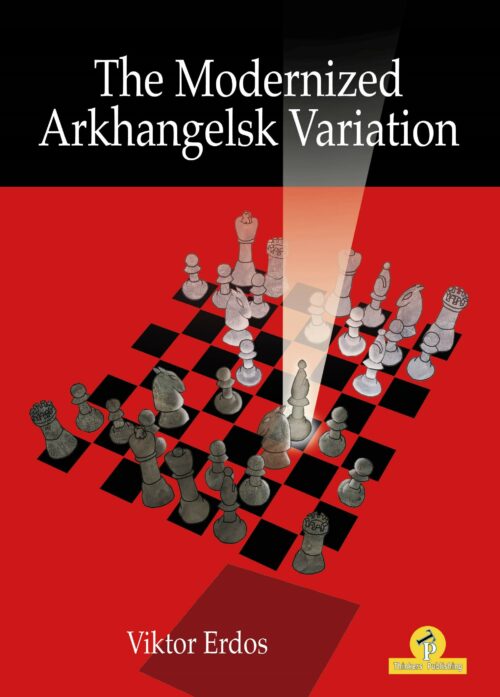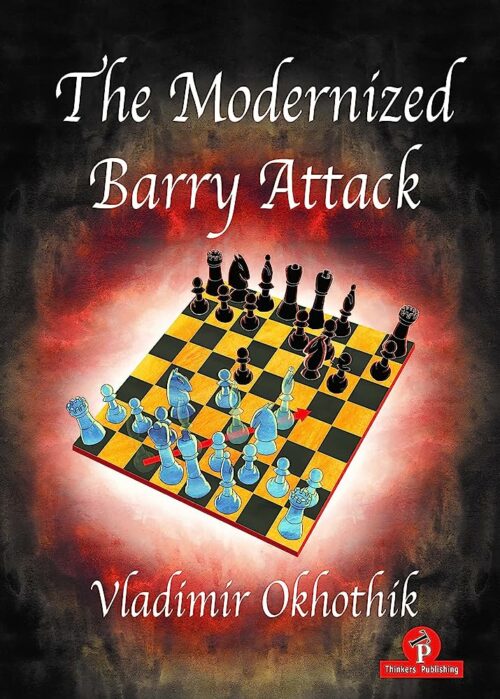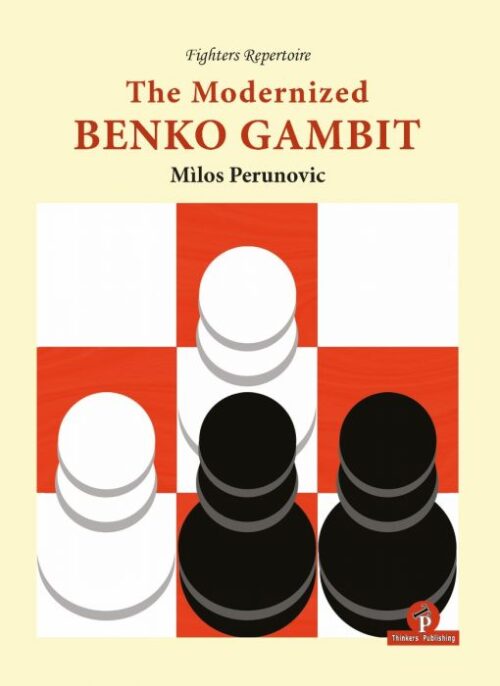-
Á útsölu!The idea behind this book is for you to ‘play’ as in a real game, and it is my job to ensure you have a pleasant time while training. I suggest you take at least an hour and a half for each game and as your coach I will indicate when to guess the moves. Sometimes there will be suggestions — including tricky ones — to measure your concentration level. The ideas behind the moves are always explained. The games have been chosen according to my personal liking and commentaries are based on those by the players themselves, which is a great help in understanding what indeed happened. In some games you will have to guess moves for the losing side too. Indeed, I expect that as you proceed you will become familiar with the question of Mark Dvoretsky: “What could my opponent play?”. Importance has also been given to the practical aspect, which doesn’t always coincide with the suggestions off ered by the engines as best. This is to make it more like ‘a real game’.
-
Á útsölu!“The current trend, developed in recent years, is for Black to capture on d4 with his e-pawn, aiming for Benoni-type pawn structure positions which lead to rather double-edged positions.” ~ Ivan Sokolov
-
Á útsölu!Nýtt inn! Frábær bók eftir GM Gormally hate introductions so I’ll keep this short. (A bit like the good moments in my chess career.) The inspiration for this book came from a golf tournament on the PGA tour I was watching recently. They’ll be plenty of golf and sportinganalogies in this book, so if these annoy you, then probably you should try another book. (Tough cookies if you’ve already bought.) Jason Kokrak won it, his first PGA tour event.
-
Á útsölu!I am convinced that to cultivate the memory of the past and to study the classics is always useful and worthwhile, not least because it enables us to understand and face with greater awareness the facts and the problems of the present time. Much has already been written about the giants who have preceded us, and in particular, the Cuban, José Raúl Capablanca, and the Russo-Frenchman, Alexander Alekhine, but a new approach can surely offer different and interesting perspectives. In The Duel, Alessandro Bossi and Claudio Brovelli go deep into the lives of these two legendary World Champions, who have left their mark in an unforgettable manner on their epoch (the first forty years of the 20th century) and who remain – in part, due to their very different personalities and relationship with the game – inimitable examples for all the chess-playing generations to come. The choice to present in parallel the two biographies (in my opinion quite rightly so), shows clearly and effectively similarities and differences, not only in the style of play, but also in the approaches to life of the two protagonists. With very precise historical descriptions and presenting the events in chronological order, the authors accompany us on a journey alongside the lives of these two legends of chess. In this fashion the personalities emerge, in many ways antithetical but equally fascinating: Capablanca, friendly and charming in society, precocious, genial and nearly invincible on the chessboard, and Alekhine, who combined a wonderful talent with a capacity for work, a competitive attitude and an energy which was truly enviable. Alekhine was rational and focused in pursuing his objective to supersede his rival. The Cuban champion represented for the younger Russian player a reference and a model – firstly, to be studied from a critical and highly penetrating perspective and then to be surpassed and beaten. The fact that, after wrestling the world title from him in the year 1927, Alekhine had always refused Capablanca . The Duel, the chance of revenge will always remain a cause of regret for chess fans, but it also demonstrates that the new World Champion was fully aware of having performed a feat that was perhaps not repeatable. The many masterpieces that both of them created on the chess board, which constitute for the public their most important legacy, enrich this volume and underline key moments of their respective careers. The games are analyzed well by the authors, who enlighten the reader as to how the diverse conceptualization and the different styles of the “duelists” (the more strategic and positional of Capablanca’s versus the more aggressive and combinative of Alekhine’s) are instructive and entertaining even nowadays, for all those who love chess and who wish to improve their understanding of it. The value of this volume lies also in the parts where Bossi and Brovelli, with painstaking accuracy, have quoted both direct impressions of the two protagonists (interviews, articles, letters and quotations from their works) and evaluations (in the comments and memories of their contemporaries). In such a way, a contest of wider significance is described, which helps in understanding the characters, the period and the specific contexts. Among the witnesses emerges, in particular, Esteban Canal, the great champion of Peruvian origin who spent much of his time in Italy. He had the privilege of fighting with both Capablanca and Alekhine and becoming acquainted, if not a friend, with them. One of the authors, Alessandro Bossi, was lucky enough to come to know Canal personally and to hear directly from him of the many episodes and anecdotes described in this book. Enjoy your reading! GM Michele Godena, March 2022
-
Á útsölu!• Compensation is a chess concept that we only fully understand when we enter the world of serious chess. • The relative value of pieces is perhaps the most difficult chess concept of all to explain. • It is one that every player must feel and believe in and can only be accepted with the help of our own practice, and when we feel it come together as though a part of us. • Why so much talk about such or similar sacrifices? Quite simply because we are afraid! We have been taught, and practice shows and proves the clear fact, that the closer we get to the last part of the game, the ending, the more pronounced a material advantage becomes. • If in the middlegame we can still hope for sudden turns, for the influence of other pieces, this is negligible in the endgame. • Maybe less so with tactical sacrifices, where we immediately see what the sacrificer gets in return. • How can we not accept the rook that the opponent offers us, when there is nothing concrete to see? One or two weaknesses perhaps, but they can be eliminated, and the material advantage and a secure victory in the endgame remains.
-
Á útsölu!The Hyper Accelerated Dragon is recommended for all players that are eager to enter critical lines in this exciting Sicilian Opening!
-
Á útsölu!Here is what has been added to this edition:
- More accurate and extensive annotations using ChessBase and Stockfish 14.
- Torre’s own annotations to several games have been unearthed and added.
- Added games to give a more rounded view of Torre. Also the six games between players other than Torre that he annotated for the Mexican Championship tournament book.
- Many more diagrams and photographs. Also more thumbnail bios of Torre’s opponents.
- More ancillary material about Torre’s life and career: newspaper articles, pictures, anecdotes, interesting facts, opinions, trivia etc.
- A 1927 interview with Torre, published in the Yucatán magazine Anahuac.
- Excerpts from 64 Variaciones Sobre un Tema de Torre by Germán de la Cruz.
- Columns and articles from newspapers in Torre’s home town of Mérida.
- “A Clash of Opposites,” comparing and contrasting Torre with the notorious Norman Tweed Whitaker.
- The full text of Torre’s 1926 booklet Development of Chess Ability.
- A review of Torre x Torre, a fascinating documentary film.
- A more extensive, more fully informed overall assessment of Torre as a player.
-
Á útsölu!My aim with the book was to provide you with a lot of insights into this remarkable variation, The Ark, and to entertain the reader with spectacular, resourceful lines to illustrate the ideas. Thus, I must stress that my book should also be interesting for those who just enjoy chess in general, not just for the fans of this line seeking new ideas! Of course, you don’t need to memorize everything to be able to play the variation successfully. Longer lines merely tend to be examples of how the game might develop, which help to enhance your understanding.
-
Á útsölu!• The Barry Attack is a little rebellious but most dynamic opening • It’s one of the fastest ways to outplay your opponent in the opening. • The ‘’super repertoire’’ that always keeps Black under pressure in all variations. • Any reasonable opening set-up can work wonders for White or Black if they know it well. • Anyone who takes the trouble to play through each model example, move by move, note by note, will be rewarded. • Your strategic play will deepen and your tactics will improve along with your assessment skills, and you’ll end up with a great repertoire!
-
Á útsölu!“With this book, I wanted to revitalise the Benko and show that, although the computer isn’t that happy with Black’s positions in certain lines, his resources are impressive, especially in ‘THE PRACTICAL GAME’, because White will face many difficulties and Black’s counter attacks, no matter how well-prepared he is. Our Beloved Benko is still very much ALIVE!:” ~ Milos Perunovic
skákbækurTómas Veigar Sigurðarson2023-06-12T16:33:59+00:00
